English publisher Vertical | ||
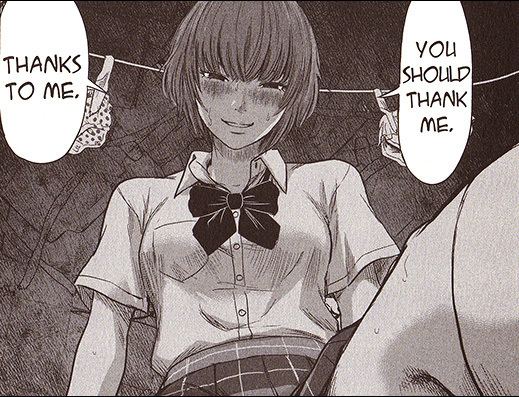 | ||
Original run September 9, 2009 – May 9, 2014 Adaptations The Flowers of Evil (2013) Genres Bildungsroman, Drama, Psychological thriller Similar Goodnight Punpun, The Severing Crime Ed, Sweet Poolside, Mushishi, Arata: The Legend | ||
The Flowers of Evil (Japanese: 惡の華, Hepburn: Aku no Hana) is a Japanese manga series written and illustrated by Shūzō Oshimi. It was serialized in Kodansha's Bessatsu Shōnen Magazine between September 9, 2009, and May 9, 2014, and licensed by Vertical in North America. The story follows a middle school student named Takao Kasuga who's forced into a "contract" by fellow student Sawa Nakamura, after being caught stealing the gym clothes of his crush Nanako Saeki, and the series of events afterwards that follow these three characters. The title of the manga comes from Charles Baudelaire's Les Fleurs du Mal.
Contents
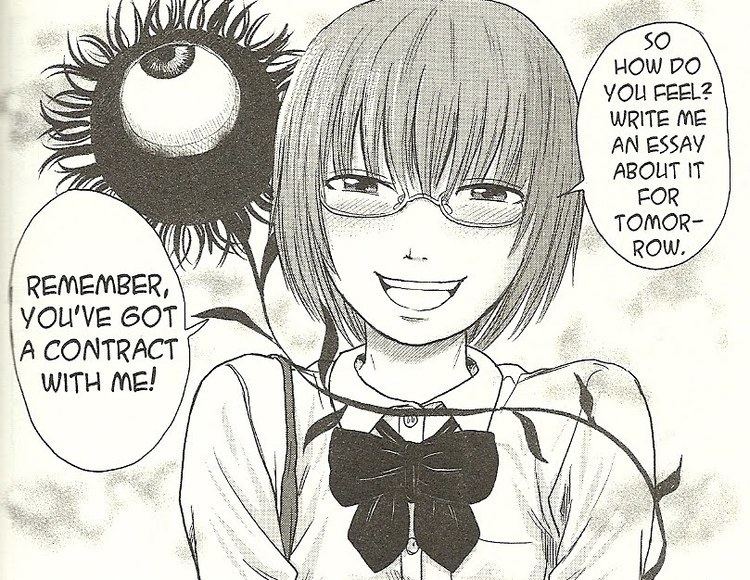
The manga received a nomination at the fifth Manga Taishō. An anime television series adaptation of the manga, produced by Zexcs, aired in Japan between April and June 2013. It was simulcast outside Japan by Crunchyroll. The anime was animated using rotoscoping techniques, causing some controversy among fans of the manga. The anime has been licensed by Sentai Filmworks.
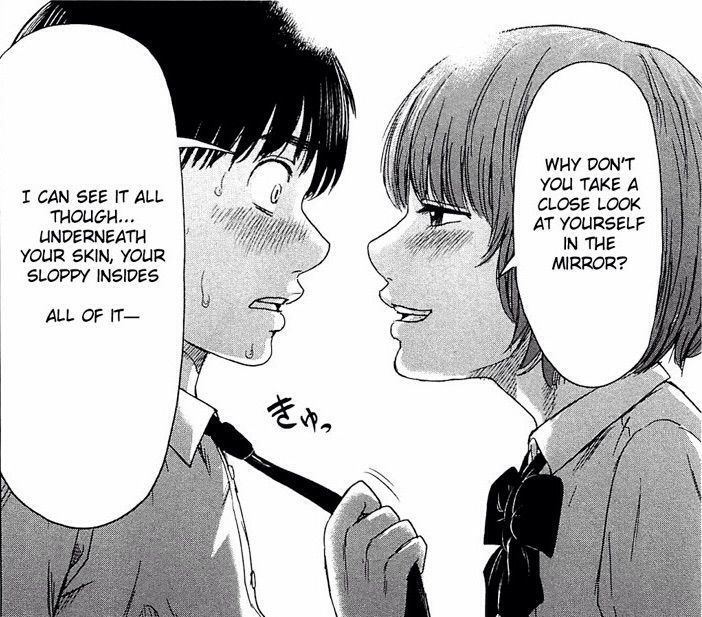
Plot
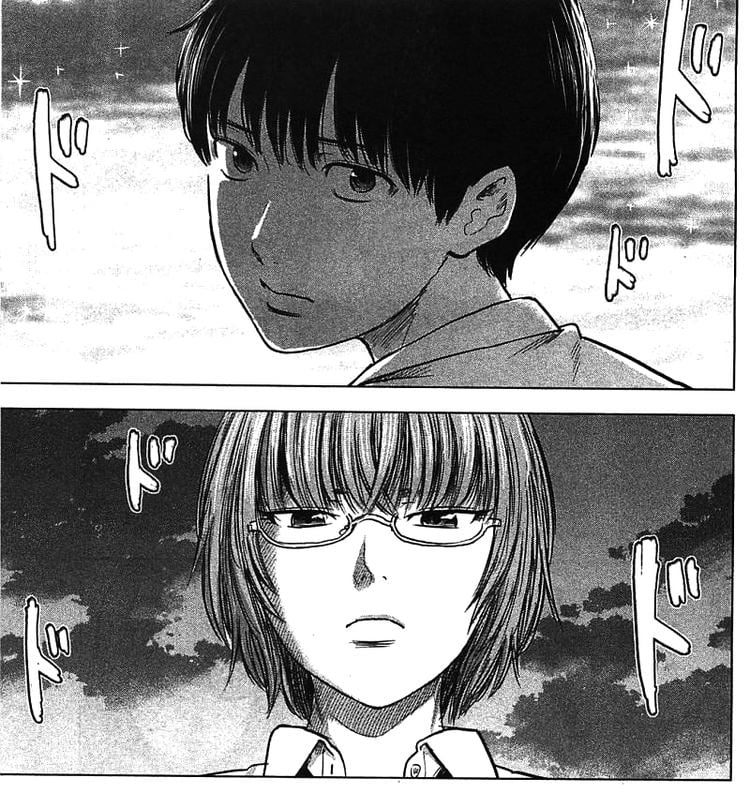
The story starts in a small town in Gunma Prefecture and follows Takao Kasuga, a middle school bookworm whose favorite book is Charles Baudelaire's Les Fleurs du mal. One day after school, he impulsively steals the gym clothes of Nanako Saeki, the classmate he idolizes. However, a girl named Sawa Nakamura sees him and blackmails Kasuga into a "contract". At the same time, Kasuga grows closer to Saeki and manages to become her boyfriend.
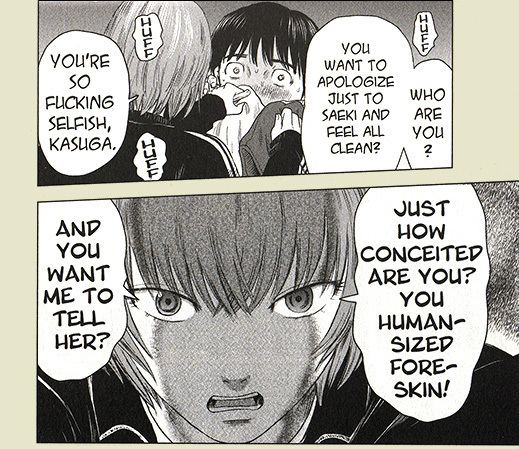
As Kasuga spends more time with both girls, he finds the guilt of his theft weighing down on him. He attempts to confess by vandalizing his classroom with Nakamura, but Saeki refuses to break up with him. When his mother finds out he was responsible for the vandalism, he runs from home and attempts to bike with Nakamura past the mountain adjacent to the town. Saeki catches up to the pair as they rest and tries to make Kasuga come back. Unable to choose between them, he estranges both girls and the police collect them.
A month later, Kasuga breaks up with Saeki and resolves to help Nakamura. He writes a composition to convey his feelings to her. When she runs from him, Kasuga goes to her house and reads in her diary about her disappointment in not being able to reach "the other side". He steals the panties of all the girls in his class except Saeki's and uses them to decorate a makeshift hideout, winning Nakamura's approval.
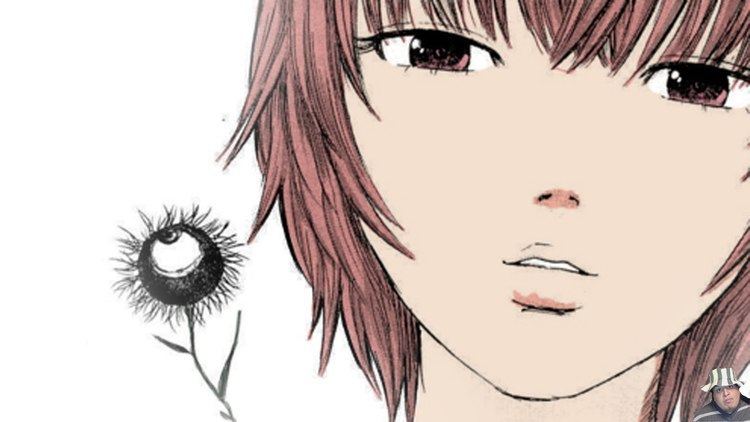
At the start of summer vacation, they create a plan to nail the panties to a piece of plywood to display at the upcoming festival. Saeki discovers the plan and lures Kasuga to the hideout, trying to seduce him and make him stay in their town. When he chooses Nakamura over her, she rapes him but Kasuga resists, causing her to burn the hideout down.
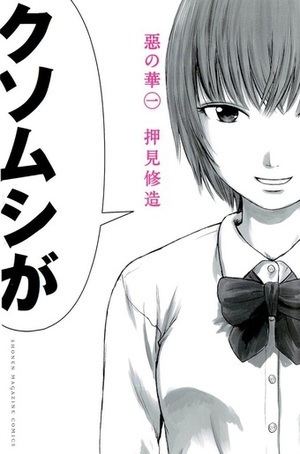
Saeki later turns herself in to the police for setting the fire, prompting her best friend Ai Kinoshita to tell their school about Kasuga's crimes. The school doesn't involve the police and his parents decide to move over the vacation. The day before the festival, Nakamura breaks into Kasuga's house, attacking his father, and the two escape. At the festival, they don disguises and climb to the top of a float while wielding a knife. They curse their town and pour kerosene on themselves, but before they can use a lighter, Nakamura pushes Kasuga over the float and she gets tackled by her father.
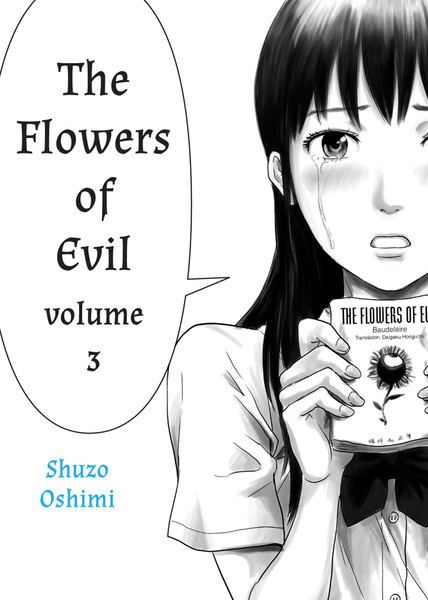
A few years later, Kasuga is going to high school in Ōmiya-ku, Saitama and still can't forget Nakamura. Kasuga finds his classmate Aya Tokiwa looking at Les Fleurs du mal in a used bookstore and she starts lending him novels, rekindling his love of literature.
Kasuga discovers that she is working on a novel and is brought to tears upon reading the manuscript because he can identify with the protagonist. Kasuga encounters Saeki and when they meet up for lunch, she accuses him of using Tokiwa as a stand-in for Nakamura. Kasuga visits Tokiwa at her workplace and asks her out, saying that he will save her, and she accepts.
Kasuga visits his hometown for his dying grandfather and ends up meeting Kinoshita, who regrets being left behind by Saeki and tells Kasuga where Nakamura moved. Tokiwa finishes her novel, but Kasuga tells her about his past and his desire to meet Nakamura again. They take the train to Tokawa Station in Chōshi, Chiba and find her eatery, where her mother warns them that Nakamura is "peaceful now", but Tokiwa insists on speaking to her.
They talk at a nearby beach and Kasuga questions her, but doesn't get satisfactory answers. The three roughhouse and Kasuga tells Nakamura that he is happy that she didn't disappear. Later, Kasuga is in college and still dating Tokiwa, who is working on another novel. Kasuga dreams about his possible futures; one where he lives a normal life with Tokiwa and his friends reunite with their loved ones, and one where he becomes an obsessed author together with Nakamura. He awakes to a vision of the flower of evil reforming itself. When he wakes up, Kasuga starts writing in his empty book, starting with the story of him meeting Nakamura.
Characters
Manga
Oshimi first read Charles Baudelaire's Les Fleurs du Mal in middle school and found the book to feel "suspicious, indecent, yet nastily noble". He based the eye-flower in the series on an illustration for the book by Odilon Redon, his favorite artist. Oshimi also makes references to other artists such as with the cover of the tenth chapter parodying Francisco Goya's The Clothed Maja.
One influence for the manga that Oshimi cited was Tetsu Adachi's Song of Cherry Blossoms, where he could relate to the feelings of the protagonist and described the manga as "depicting murky self-consciousness and the dark side of youth with astounding intensity..." Other manga that influenced him were Masahiko Kikuni's Moonlight Whispers and Haruko Kashiwagi's Dog, which he felt had in common that they were coming-of-age stories about "discovering 'a value system of one's own'" which he hoped his own manga could do. After the publication of the second volume of the manga, Oshimi learned of the French film Don't Deliver Us from Evil and in retrospect he felt he could relate to the themes of the film where "the girls worship Baudelaire and Lautrémont, create a kingdom of evil all for themselves, and fall into ruin..."
Oshimi drew on many aspects of his life for the manga such as the settings and characters. The settings are based on real locations from Oshimi's hometown including: the school library, the riverbank, and the park where Kasuga is splashed with water. Many of the characters also have real-life models: Nakamura is based on a person who used to call Oshimi things like "shitbug" and other phrases that Nakamura uses. Kasuga's friend Hiruta was based on Oshimi's middle school friend who betrayed him to the class bully.
Anime
Initially, the director Hiroshi Nagahama declined the offer to direct the anime because he felt it would be best presented as live-action, but reconsidered when he figured out how to adapt it and pitched the idea of using rotoscoping. He felt it was the most appropriate choice because to him, the manga felt very realistic and close to daily life. The live-action filming took around three months to complete on location in Kiryu, Gunma. Along with the editing after, it took about twice the amount of time to produce than a regular anime. The end cards at the end of each episode were animated by Nagahama himself in traditional anime style to differentiate them and he made Oshimi's hair wave around to emulate flash animation.
Before the premiere of the anime, the producer opted to not release any character artwork. When the anime aired, the use of rotoscoping resulted in criticism from fans of the manga. Nagahama knew that the rotoscoping would be controversial, but he felt it was worth it because it would make the anime leave an impact, even if it was viewed as "creepy". When asked at a Q&A panel at Animazement 2013 why he didn't make the adaptation a traditional live-action series, he responded that in live-action, the focus is on the actors and not the characters. When further asked about what kind of atmosphere he was trying to create with the pacing and soundtrack of the anime, Nagahama replied that he wanted to make an anime that feels fresh. In an interview with Natalie including both Nagahama and Oshimi, Oshimi said that he was aware of the rotoscoping idea and approved of the direction Nagahama took the adaptation, especially of his intent to "leave the viewer with a scar" which he felt aligned with his goal of figuratively "murdering" the readers. He also felt that Nagahama had deep insight into the story and that the anime along with the manga formed two versions of the story from his original idea. Oshimi was also involved in providing feedback on the adaptation as it went along and when shown anime-style drawings, preferred the different look of rotoscoping.
Themes
One of the issues that Oshimi wanted to tackle with the manga was the concept of "perversion", which he felt was misunderstood and actually a hidden quality of everyone. Another question he wanted to answer was where the process of adolescence ends; the beginning clearly demarcated by the physical characteristics of puberty, but the ending unclear, which he felt has to be discovered by an individual by themselves.
Manga
The manga was launched in the first issue of the Japanese manga magazine Bessatsu Shōnen Magazine published by Kodansha on September 9, 2009 and ended on May 9, 2014. Kodansha has compiled the 57 chapters into 11 volumes from March 17, 2010 to June 9, 2014. The series was licensed in North America by Vertical in September 2011, with the first volume published on May 8, 2012 and the last volume on October 14, 2014. The Japanese edition of the cover of the first volume originally had a dialogue balloon where Nakamura says "You Shitbug", but the Vertical edition replaced the speech with the title. The manga has also been published in Italy by Panini Comics, in Spain by Norma Editorial, and in Taiwan by Tong Li Publishing.
Anime
The anime adaptation is directed by Hiroshi Nagahama and produced by Zexcs. It was the first anime to use rotoscoping exclusively. It aired in Japan between April 5 and June 29, 2013 and has been licensed by Sentai Filmworks in North America. Crunchyroll has the streaming rights in Australia, North America, UK and other territories. The opening theme is "Aku no Hana" (惡の華) by Uchūjin with guest vocalists Noko, Mariko Gotō and Shiho Nanba. The ending theme is "〜花〜 A Last Flower" by Asa-Chang & Junray. At Sakura-Con 2014, Nagahama explained the flashforward at the end of the last episode as a declaration of his intention for a second season.
Manga
In Japan, the manga charted several times on the Oricon lists: Volume 5 was the 30th best-selling manga for the week of January 2, 2012, rising to 17th the next week. Volume 7 was the 44th best-selling manga for the week of December 10, 2012. Volume 8 was the 22nd best-selling manga for the week of June 3, 2013, rising to 17th the next week. Volume 9 was the 22nd best-selling manga for the week of August 5, 2013, falling to 29th the next week. Volume 10 was the 17th best-selling manga for the week of January 6, 2014, falling to 25th the next week. Volume 11 was the 5th best-selling manga for the week of June 9, 2014, falling to 42nd the next week. The first 9 volumes of the manga sold over 2 million copies in Japan. The manga was also 18th on the Top 20 Manga for Male Readers in the guidebook Kono Manga ga Sugoi!. Vertical's localization of the manga was able to reach The New York Times Manga Best Sellers chart on two different occasions: Volume 1 was the 3rd best-selling manga for the week of May 13, 2012 and Volume 3 was the 8th best-selling manga for the week of October 28, 2012.
The manga was nominated for the fifth Manga Taishō (Cartoon Grand Prize) but lost to Hiromu Arakawa's Silver Spoon.
Anime
Anime News Network (ANN) editor Carl Kimlinger gave the series high praise when it was streaming, giving credit to both director Hiroshi Nagahama and composer Hideyuki Fukasawa for doing Oshimi's work justice with direction that's parts psychological thriller and darkly romantic with the inclusion of rotoscoping and a score that's atonally sinister, saying that, "[I]t is a series that can be attacked from any direction and not crack. It is, in its delightfully unpleasant way, a masterpiece." Fellow ANN editor Nick Creamer also liked the series, praising the story for conveying themes of human identity and codependence with amoral people and the direction for its slow and methodical pace, concluding that "The Flowers of Evil is one of the best shows of recent years, an absurdly confident mood piece with a uniquely effective aesthetic and a true understanding of and sympathy for the emotional trials of youth. It should be watched by anyone interested in the potential of animation for conveying human truth." Richard Eisenbeis of Kotaku, on the other hand, heavily panned the series for having an unlikable main cast, lack of any stakes or tension, and horrendous technical aspects in terms of animation and no musical score in places, concluding that, "It's just an utter train wreck of a series. I recommend it to no one." Tim Jones, writing for THEM Anime Reviews, was also put off by the rotoscoping style, saying that from a distance it looks "comical and oft-putting." But Jones gave praise to the cinematography, the main trio's development and Nagahama's direction on a typical high school setting.
